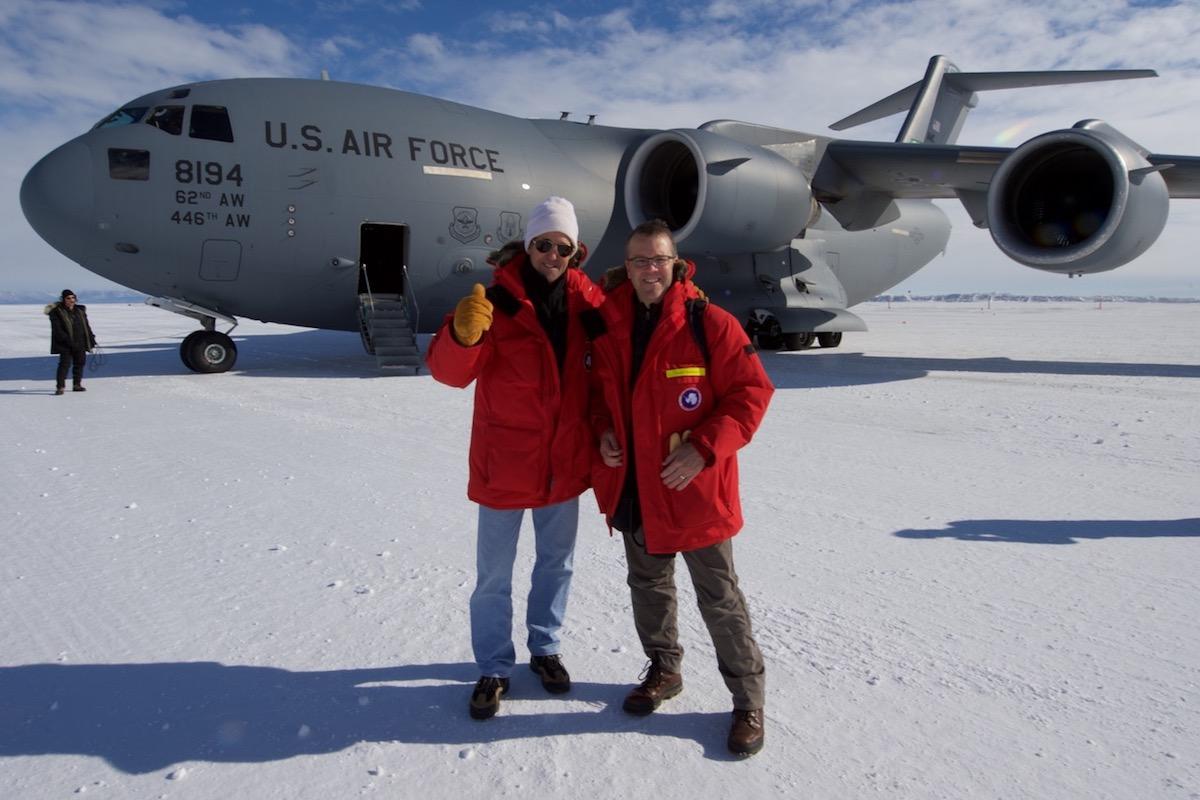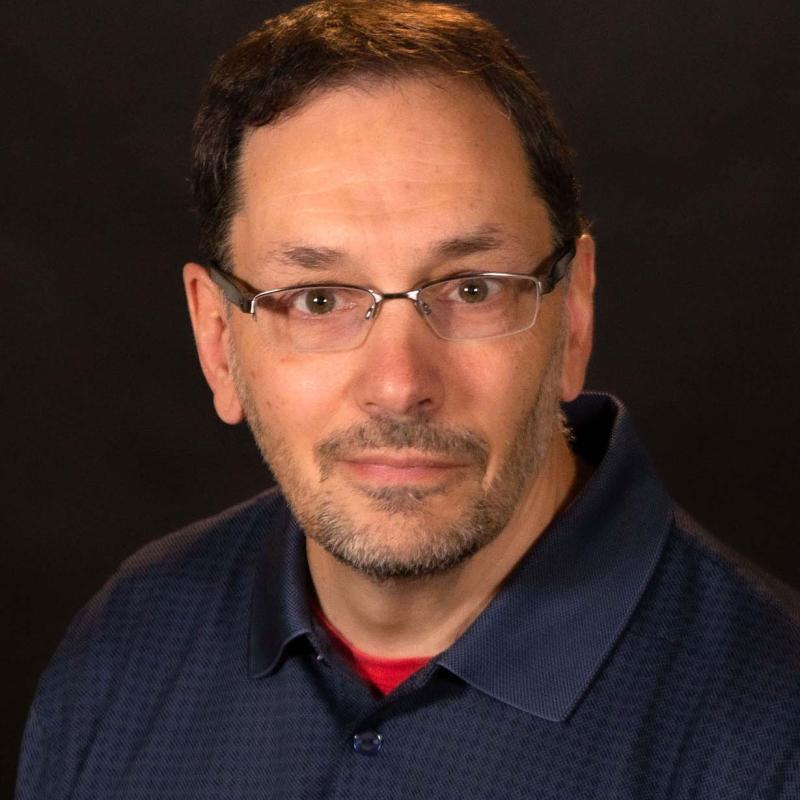When Glen Johnson ’85 first set foot on the Lawrence University campus in the fall of 1981, he was singularly focused on forging a career as a journalist.
He had opted not to attend a school with an established journalism program, preferring instead a liberal arts education that would give him the broad-ranging intellectual tools needed to pursue journalism while also prepping him for life’s unknown adventures.

Glen Johnson ’85
Nearly three decades later, still fully engaged in a journalism career that had taken him to the Boston Globe and included coverage of five presidential campaigns, Johnson would find himself staring down one of those unknown adventures. John Kerry, freshly tabbed by President Barack Obama to replace Hillary Clinton as secretary of state, reached out to Johnson in early 2013 with an unexpected offer — join his team as the senior communications advisor.
Johnson accepted, and he would be by Kerry’s side for the next four years, traveling to 91 countries and all seven continents, getting an up-close look at diplomacy at the highest levels and gaining perspective on world affairs that he said was both encouraging and daunting.

More information on the book can be found at www.glenjohnson.com.
His experiences are now shared in his new book, Window Seat on the World, published this summer by Disruption Books. It’s garnering significant attention, in large part because of the vast differences in diplomatic style between that of Kerry and the Obama administration and that of President Donald Trump and his administration. Johnson hopes the book will shed new light on diplomacy, its opportunities and its challenges, and provide a guide for those interested in a career in diplomatic service.
As Johnson makes the rounds of media interviews and book fairs, he hasn’t been shy about singing the praises of the liberal arts education he got at Lawrence and how that gave him a base on which to build a journalism career and then deftly shift into his role with Kerry.
“I came to Lawrence with the full expectation of being a reporter,” Johnson said. “I was fascinated by it.”
He majored in government at Lawrence, drew inspiration and insight from talented English professors and studied abroad in London for two trimesters.
“When I came out, I climbed the proverbial ladder rung by rung to develop myself as a reporter, from small newspapers to the world’s largest news organization in the AP, and then to the largest newspaper in the part of the country where I lived, the Boston Globe,” Johnson said.
“When I got this call from John Kerry offering the position at the State Department, it was a huge life decision, to change careers from the only one I’d ever done or ever really wanted to do. I thought about where I was personally, sort of mid-life with my younger kid about to graduate from college, and feeling like if I wanted to pursue a second act, now is probably the time.
“And then the specifics of the opportunity, the chance to have a high-level position with a top Cabinet officer and to see the world at his side. … If there was anything worth leaving the only career I ever had known, it was for something I considered to be the opportunity of a lifetime.”

Glen Johnson ’85 took more than 100,000 photos during his time with Secretary of State John Kerry, including this one of Kerry meeting with Russian President Vladimir Putin.
In the four years that would follow, Johnson would spend the equivalent of four months on an airplane, logging enough mileage to take him and Kerry around the world 57 times. In addition to being Kerry’s lead communications officer, Johnson became the traveling contingent’s primary photographer, shooting more than 100,000 photos, many of which are featured in the book and are part of his public presentations about the book.
He had a front row seat for Middle East peace talks, Iran nuclear negotiations, and government transitions in Afghanistan and Nigeria. He witnessed the difficult diplomacy that comes with interactions with China and Russia. And he got a bird’s-eye look — and unsettling lessons — in the perils of climate change and their global ramifications. All of that is explored in the book.
“I wanted to deal with topics that really struck me and I thought had resonance and would continue to have resonance,” Johnson said.
It was climate change, and the stark reality of what’s at stake, that may have struck the rawest nerve, he said. And it came as perhaps his biggest surprise.
“At first I thought that was a strange thing for us to focus on,” Johnson said. “I knew John Kerry to be an environmentalist, but I thought it was almost a strange thing for a secretary of state to focus on when we first started. But not too long into this job, I realized it made sense because it was a problem that by definition transcended borders and was global in scope.
“And then the blessing of the job was to have the ability to travel the way we could. We ended up going almost to the North Pole, going almost to the South Pole. We saw above the Arctic Circle. We saw Antarctica. We saw all these places around the middle of the Earth. The effects of climate change were so readily apparent that you could see the effects of them on diplomacy. We have the potential now for issues with migration sparked by climate change, we have the potential for water wars between the haves and the have-nots.”

United States Secretary of State John Kerry flies in an Embassy Air Chinook helicopter from Kabul International Airport to ISAF headquarters in Afghanistan in April 2016. Glen Johnson ’85, who took the photo, says visits to Kabul and Baghdad were the two trips he and Kerry never told their families they were making.
Johnson minces no words about the abrupt change in attitude and message regarding climate change that came with the transition to the Trump presidency. He expresses other frustrations on topics of shifting diplomacy and approach, but the climate change conversation cuts particularly deep because of what he saw with his own eyes.
“It’s tremendously alarming and it’s frustrating and exasperating,” Johnson said. “I have zero patience for climate deniers because there is no factual basis for that belief. There are reams of empirical data and there is so much you can see first-hand to rebut that. The debate can’t be about whether climate change is occurring. The debate has to be focused on what to do to address it.
“If you have someone in office who talks about it as being a hoax and that kind of thing, you just can’t take someone like that seriously. And especially someone who has the opportunities that we had at the State Department, and that is to travel the world to see it first-hand. You don’t have to take someone else’s word for it. You don’t have to take 97 percent of peer-reviewed scientific studies on the topic. You can get on a plane and you can go to Svalbard yourself or you can go down to McMurdo Station like we did. The current secretary of state or the current president can do all that, and yet they choose not to.”
While the widely different approaches to diplomacy between the Obama and Trump presidencies has drawn much of the media attention surrounding the book, Johnson said he purposely didn’t weave that into the bulk of the book. He saved that for a chapter near the end.
If this were just an Obama vs. Trump comparison, the book would have a short shelf life, Johnson reasoned. He’d rather the book take a deeper run at diplomacy and the call to diplomatic service.
“I wanted the book to stand up beyond these four, or even eight, years of a Trump era,” Johnson said. “I wanted it to be more about institutional lessons of diplomacy as illustrated by a more classical diplomat like John Kerry than an us-versus-them thing.”
The art of State Department diplomacy is a mystery to most Americans, Johnson said, even though it incorporates thousands of employees in offices, posts, embassies and consulates around the world. It’s often the most forward-deployed part of the federal government, more so than the U.S. military in many cases, but most people know little about it.
“I saw this book as a chance to teach about diplomacy, have some case studies about issues that continue on today,” Johnson said. “And then also potentially to serve as a guide to inspire diplomats.”




